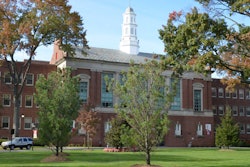Efforts to research, improve, and democratize artificial intelligence (AI) for use in numerous fields are underway, according to experts from the National Science Foundation (NSF). Dr. Michael Littman
Dr. Michael Littman
Leaders from multiple different NSF divisions gathered during a virtual panel last Thursday to point out how the federal agency was funding the use of AI in sectors such as climate, healthcare, education, and agriculture.
The current funding commitments are about $500 million and are being used to support endeavors such as the National Artificial Intelligence Research Institutes program, said Dr. Michael Littman, division director for NSF’s division of information and intelligent systems.
Discussions around AI and machine learning have become more frequent as of late, with AI tools such as ChatGPT seemingly accessible to the general public. The discourse has come with its fair share of skepticism about skewed results and potentially replacing workers in some industries.
The AI research community is aware of such concerns and some NSF-affiliated institutes – such as the AI Institute for Research on Trustworthy AI in Weather, Climate, and Coastal Oceanography (AI2ES) and The Institute for Trustworthy AI in Law & Society (TRAILS) – are actively working towards developing more reliable AI, Littman said.
"People are worried about the ways the technology can negatively impact individuals, marginalized groups, organizations, communities, society, the environment, and even the planet,” Littman said. “AI researchers, like me, are very much aware of these concerns and are actively helping us better understand and address the ethical, legal, and societal ramifications of the way AI is deployed."
There are currently 25 AI institutes across more than 40 states, said Dr. Abi Ilumoka, program director for NSF’s division of undergraduate education.
“They bring together hundreds of people, their ideas, the various problems that they dabble in, and the various technical approaches for maximum impact,” Ilumoka said. “Over time, one can expect that this will grow into thousands of researchers and investigators at all levels – from graduate students to post-docs and practitioners -- who will have direct or indirect access to cutting-edge AI research and infrastructure."
Marginalized groups are also being encouraged to partake in such research, by way of the NSF ExpandAI program, Ilumoka said. The program funds minority-serving institutions (MSIs) to either develop institutional capacity in AI or partner with AI institutes to increase research activity.
The goal of AI use in many fields – including teaching and healthcare – is as a tool, not a replacement of personnel, the leaders said. Research is being done to investigate how AI can be used to facilitate productive conversations among students and support adult learners online, said Dr. Amy Baylor, program director for NSF’s Division of research on learning in formal and informal settings.
In healthcare, AI could be used to process patient information so that healthcare professionals can instead spend their time observing and interacting with the actual patients, said Dr. Wendy Nilsen, deputy division director for NSF’s division of information and intelligent systems. Other promising uses for AI include routine breast cancer screenings, detection of cognitive decline and Alzheimer’s, and pre-pandemic warning systems, she said.
And as the Earth experiences climate change, research is being done to intersect AI with “computational sustainability” efforts, agriculture, and forestry, said Jim Donlon, program director for the National Artificial Intelligence Research Institutes program.
One such effort is AI Institute for Climate-Land Interactions, Mitigation, Adaptation, Tradeoffs and Economy (AI-CLIMATE), a USDA-NIFA-funded joint endeavor by University of Minnesota Twin Cities, Colorado State, Cornell, Delaware State, North Carolina State, and Purdue. There, researchers are looking into how AI can be used to help estimate greenhouse gases, according to the project’s website.
But as with other technological revolutions, the mass adoption of AI tools may come with changes to the existing workforce, Ilumoka said.
"What happened in each of those cases was new jobs were created, so folks had to go and get retrained in order to step into those new jobs," Ilumoka said. "There is a time lag involved, but over a period of time, some jobs just stopped existing and new jobs were created. I think we're going to see the same in AI, jobs that are repetitive – that you can accumulate data and train a robotic, artificial system to complete – will no longer be available to human beings."
Arrman Kyaw can be reached at [email protected]


















